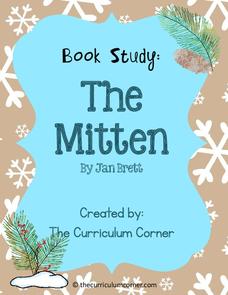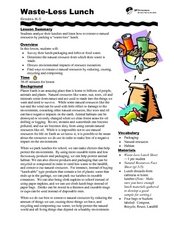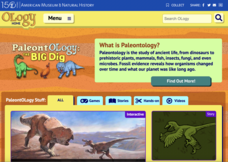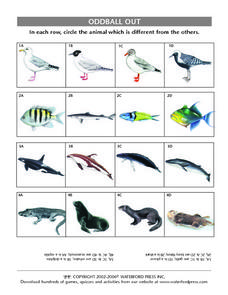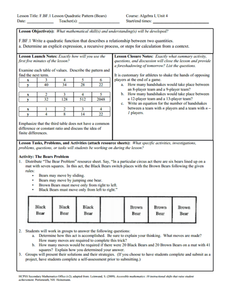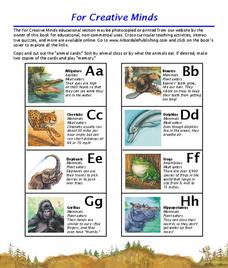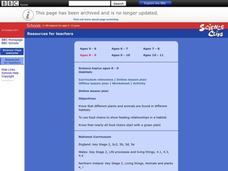Curated OER
Teeth and Eating
Students examine pictures of different animals and decide if they eat meat and/or plants. They inspect models of pairs of upper and lower teeth and discuss which teeth are most useful for cutting grass and tearing meat.
Scholastic
Study Jams! Order of Operations
Please excuse my dear Aunt Sally! Sort of like an animated slide show, this lesson walks fifth graders through the order of operations. Also included are a sing-along karaoke video, key vocabulary with definitions, and a seven-question...
Curated OER
Science: Teddy Bear Nation
Students sort teddy bears according to types and then graph the results. They each bring a bear to class and then discuss their similarities and differences. Once the bears have been sorted into groups according to size and color,...
Curated OER
2nd Grade - Act. 27: How Animals Prepare for Winter
What do animals do during the winter? Second graders will discover that some animals migrate and other hibernate during the winter. Using "How and Why Animals Prepare for Winter," by Elaine Pascoe, they will discuss and create a drawing...
Curriculum Corner
Book Study: The Mitten
Looking for a set of resources to compliment a reading of The Mitten by Jan Brett? A fun winter resource has everything from story sequencing and writing prompts to a parts of speech sort and a mitten flap book. The activities are great...
Curated OER
The Birds of a Feather Flock Together
Fifth graders identify all parts of an egg, and explore their importance to the life cycle of a chicken. Learners compare all sorts of birds and place them in categories based on what they look like. This five-day lesson effectively...
SF Environment
Waste-Less Lunch
Is it possible to have a waste-less lunch? Can your class become leaders in conservation? Discuss the importance of reducing waste during lunch time with a fun lesson that can be extended to everyday practices. First the class examines...
Curated OER
Introduction to Poetry
What makes a poem a poem? Give your class a basic understanding of some of the different aspects of poetry by showing them a slide show of poetic devices and elements. The presentation is quite long, so you might split it up into a few...
EngageNY
Interpreting the Graph of a Function
Groups sort through NASA data provided in a graphic to create a graph using uniform units and intervals. Individuals then make connections to the increasing, decreasing, and constant intervals of the graph and relate these...
American Museum of Natural History
Anatomy Adventure
Sometimes science is puzzling. Using an online animation, individuals manipulate skeletal bones of an ancient species to recreate its skeleton. Learners complete the skeletal puzzle and learn about the process of paleontology in person...
Curated OER
Animals Galore
Third graders use structural characteristics to sort and classify animals into groups.
Curated OER
Animals Piece by Piece
Learners sort organisms and objects into groups according to their parts and describe how the groups are formed.They identify body parts of animals from puzzle pieces, assemble the puzzle, and name the animal.
Curated OER
Creating a Cranimal
Students design their own mix and matched animals. They reinforce their literacy by working with pieces of animal names to invent a new animal. They use their drawing skill using a lesson framework that emphasizes transformation.
Curated OER
Oddball Out: Birds, Fishes, Marine Mammals
In this science worksheet, pupils analyze 4 animal pictures in a row. Students circle the animal which is different from the others. There are 4 rows of pictures. Answers are provided upside down at the bottom of the page.
Curated OER
Oddball Out: Animals that are Different
In this science worksheet, students analyze 4 pictures of animals in a row. Students circle the animal which is different from the others. Answers are provided at the bottom of the page. There are 4 rows of animals.
Curated OER
Teeth and Eating
Pupils explore animal diets and teeth. In this animal science lesson, students view photos of animals and their teeth. Pupils identify the type of diet the animal has based on the teeth. Students are introduced to the terms "herbivores"...
Curated OER
Bears
Students complete a variety of bear-related activities. They sort and graph teddy bears, distinguish between real and non-real bears and research bear life cycles and habitats.
Curated OER
The Grouchy Ladybug
Young scholars learn about sorting and classifying objects by size while reading Eric Carle's "The Grouchy Ladybug". In this sorting and classifying lesson, students first listen to and interact with the story. They then look at cut-outs...
Curated OER
Big Bones, Little Bones
Students investigate archeology. In this archeology lesson, students research the process of excavation. Students participate in a mock-excavation and sort objects by physical properties.
Curated OER
Whose Parts Do I Have? (Wings and Things)
Students identify an animal and a body part and then matches a body part to a specific animal. This will assess their ability to sort organisms and objects into groups according to their parts and describe how the groups are formed and...
Curated OER
Animal Shelters - Sharing Our Knowledge
Young scholars arrange a service project for a local animal shelter. For this animal shelter lesson, students collect items to be given to a local shelter. They learn how to estimate the monetary value of the donated items. They can do...
Curated OER
ABC Safari
Students study the animals and their alphabet letter. In this animal alphabet lesson, students associate the animals with their letter and learn facts about the animals. Students may use the cards to classify animals by groups or play a...
Curated OER
Who Lives Here: Otter, Grey Squirrel, Badger, Rabbit or Fox?
In this animal habitat activity, students read five clues pertaining to the homes of the otter, grey squirrel, badger, rabbit and fox. Students tell what animal lives in each place. This appears to be an online interactive activity.
Curated OER
Habitats
Students investigate the habitats of living things and the cycle of the food chain. In this scientific inquiry online lesson, students examine the habitats of plants and animals as well as the food chain as they sort pictures of living...




